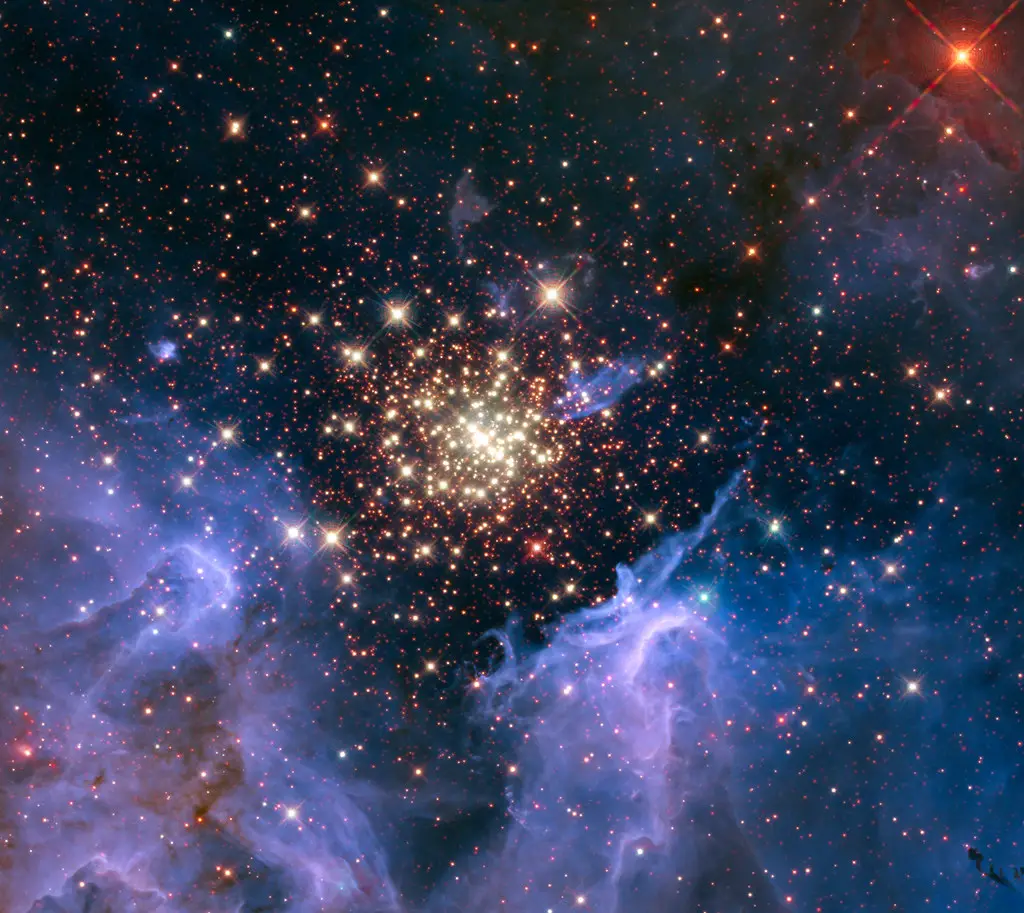A star is formed when light element atoms are crushed under enough pressure for their nuclei to fuse. Gravitational forces compress atoms in the interstellar plasma until fusion reactions begin, resulting in all-stars. And as the fusion processes start, they exert pressure outward. The star will remain stable as long as the gravitational pull and the fusion processes’ pull are equal.
Gas clouds are prevalent in our galaxy, as well as other galaxies similar to ours. Nebulae are the name for these clouds. A typical nebula spans hundreds of light-years large and contains enough matter to form thousands of stars the size of our sun. The majority of the gas in nebulae is hydrogen and helium molecules, but most also have atoms of other elements and even unexpectedly complex organic molecules. These heavier atoms represent the remains of older stars that erupted in a supernova explosion. The origins of the organic compounds are still unknown.
The true meaning of the word star may not be what you think it is! You might think that stars are just big balls of light in the sky, but actually, all stars are huge balls of plasma. Stars are formed when light element atoms come together under very specific conditions and form an entirely new type of matter – plasma. It sounds like magic, but it’s actually science!
According to some astronomers, the collapse of the nebula is thought to be caused by a gravitational or magnetic disturbance. The gases lose potential energy as they gather, raising the temperature.
The temperature rises as the collapse progresses. The collapsing cloud breaks up into a slew of smaller clouds, each of which has the potential to become a star. The cloud’s core collapses quicker than the surrounding parts to conserve angular momentum, and the cloud begins to rotate faster and faster. Hydrogen gas molecules break apart into hydrogen atoms when the core reaches roughly 2,000 degrees, Kelvin. When fusion reactions commence, the core reaches a temperature of 10,000 degrees Kelvin, resembling a star. It becomes a protostar when it has shrunk to around 30 times the size of our sun.
The outside pressure works against gravity when the pressure and temperature in the core are high enough to support nuclear fusion. At this moment, the core reaches the size of our sun. The dust that surrounds the star heats up and flashes brightly in the infrared spectrum. The new star’s visible light cannot penetrate now. The star’s radiation pressure eventually blows the envelope away, and the new star evolves. The amount of trapped gas impacts the star’s characteristics and longevity. We are in the middle of our star’s 10-billion-year life cycle, with around five billion more years to live.
Giant clouds of cosmic material collide gravitationally to generate stars. The space between stars isn’t empty; interstellar stuff is made up of gas and dust between the stars. Granted, interstellar matter makes up just around 10% of the mass in our Milky Way galaxy. But, despite its frailty, this material has a gravitational pull, and as a result, it will begin to pull itself together.
As the universe’s mass grows more prominent and the distance between individual atoms shrinks, gravity gets more powerful. This intergalactic mass will eventually collapse in on itself. The infalling material on the outside compresses the material in the center, pushing it down to reach the center. And the core of the collapsing cloud is heated as a result of this compression.
The temperature rises to a point where fusion occurs. The substance that fell in becomes a beautiful, burning star. The star will shine as long as nuclear processes produce hydrogen gas, and gravitational pressure maintains the atoms at the core hot and crowded.
![]()
